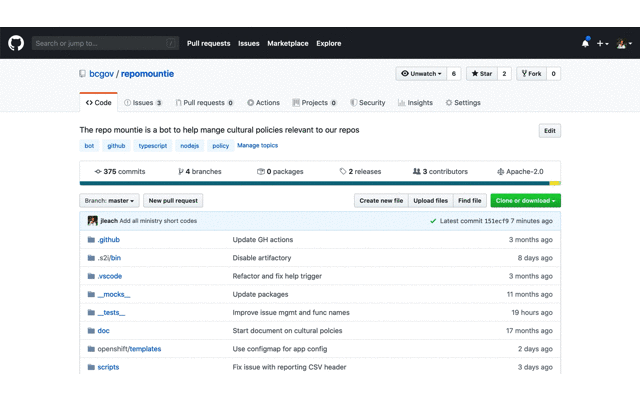The BC Chronic Disease Registry (CDR) is a data product that captures information about the rate of new and persistent cases of chronic diseases across the province. Age-standardized rates of disease are studied for different regions, including HAs (Health Authorities) and CHSAs (Community Health Service Areas), as well as for demographic variables such as sex.
In this project we aim to create an interactive dashboard that will allow users of all technical expertise to explore and visualize spatial and temporal information of the disease rates in the data, and to develop an analysis pipeline that will describe the temporal trends in the data.
Our data product is currently available for internal use only. Please contact the CDR Working Group to request access to the data. To re-run the analysis and run the dashboard, please ensure that R (version 4.2.0) and RStudio are installed, then follow the respective instructions below.
- Clone this Github repository.
- Create a folder named “data” in the root directory of the repository. Download and save the “Data_T_CHSA” inside this “data” folder.
- Open the
opho-cdr-shiny.Rprojectfile in RStudio. Run the following command in the R console to install the package dependencies or manually as listed below:renv::restore() - Run the following command using the command line/terminal from the
root directory of the project:
make all - To view the temporal model visualizations in a Shiny document, check
that results have been output to “results/model”. Run the following
command in the R console:
rmarkdown::run('src/model/02_visualize.Rmd') - To view the Joinpoint Regression results, check that results have
been output to “results/model”. To veiw the method paper, run the
following command in the R console:
rmarkdown::run('src/joinpoint/joinpoint_method.rmd')
- Clone this Github repository
- Create a
data/directory within thesrc/dashboard/director, and save the original and modeled data inside in folders named “raw” and “model” respectively. The data inside therawfolder should be saved from the “Data_MFT_HA_CHSA” dataset, and the data inside themodelfolder should be saved from running the Models (Both Temporal and Joinpoint Regression) above. The folder structure should look as follows:
.
├── ...
├── src
│ ├── dashboard
| │ ├── data
| │ | ├── model # Modeled Data from Modelling
| │ | | ├── HSCPrevalence
| │ | | | ├── AMI_EPI.csv
| │ | | | ├── ASTHMA_EPI.csv
| │ | | | └── ...
| │ | | ├── IncidenceRate
| │ | | | ├── ALZHEIMER_DEMENTIA.csv
| │ | | | ├── AMI.csv
| │ | | | └── ...
| │ | | └── LifePrevalence
| │ | | | ├── ALZHEIMER_DEMENTIA.csv
| │ | | | ├── AMI.csv
| │ | | | └── ...
| │ | | └── joinpoint_for_shiny_df.fst
| │ | | └── joinpoint_results.csv
| │ | └── raw # Original Data from "Data_MFT_HA_CHSA'
| │ | ├── HSCPrevalence
| │ | | ├── AMI_EPI.csv
| │ | | ├── ASTHMA_EPI.csv
| │ | | └── ...
| │ | ├── IncidenceRate
| │ | | ├── ALZHEIMER_DEMENTIA.csv
| │ | | ├── AMI.csv
| │ | | └── ...
| │ | └── LifePrevalence
| │ | ├── ALZHEIMER_DEMENTIA.csv
| │ | ├── AMI.csv
| │ | └── ...
│ | └── ...
│ └── ...
└── ...
- Run the following command using the command line/terminal from the root directory of the project:
shiny::runApp('src/dashboard')
-
R version 4.2.0 and R packages:
- here=1.0.1
- tidyverse=1.3.1
- ggplot2=3.3.6
- R-INLA=22.05.07
- docopt=0.7.1
- shiny=1.7.1
- shinyjs=2.1.0
- plyr=1.8.7
- leaflet=2.1.1
- sp=1.4-7
- rgdal=1.5-32
- plotly=4.10.0
- scales=1.2.0
- shinycssloaders=1.0.0
- rgeos=0.5-9
- shinyWidgets=0.7.0
- DT=0.23
- shinyBS=0.61.1
- fANCOVA=0.6-1
- segmented=1.6-0
- broom=0.8.0
- modelr=0.1.8
- purrr=0.3.4
- fst=0.9.8
-
GNU make 3.81
To report bugs/issues/feature requests, please file an issue.
If you would like to contribute, please see our CONTRIBUTING guidelines.
Please note that this project is released with a Contributor Code of Conduct. By participating in this project you agree to abide by its terms.
Copyright 2022 Province of British Columbia
Licensed under the Apache License, Version 2.0 (the "License");
you may not use this file except in compliance with the License.
You may obtain a copy of the License at
http://www.apache.org/licenses/LICENSE-2.0
Unless required by applicable law or agreed to in writing, software distributed under the License is distributed on an "AS IS" BASIS,
WITHOUT WARRANTIES OR CONDITIONS OF ANY KIND, either express or implied.
See the License for the specific language governing permissions and limitations under the License.
This project was created using the bcgovr package.


